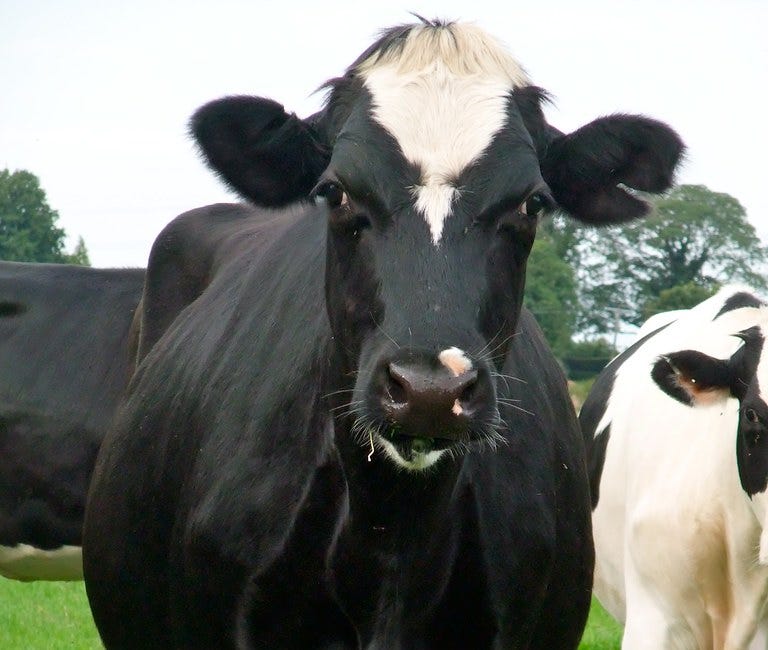The Year 2055
Trying to convince middle-schoolers that being in your forties is not the same as science fiction
Whenever my mind starts churning on something, whether it’s something I’m excited about or something that’s bothering me, I seem to turn it into something I can bring into my classroom. This winter, concern about the present is mixing with a lot of thinking about how little we’ve articulated as a culture about how we really want the future to be. Being myself, I made a unit about it.
As I mentioned a little while back, I’ve been excited to play around with writing collaborative futurist fiction with my students.
We didn’t have space in the curriculum to get into it all with my Core Class kids, but I did do it with my Young Writers Workshop and homeschool co-op Creative Writing class. AND IT WAS AWESOME!
Here’s what we did:
First, I had us all imagine how old we’d be in 2055. The kids would be my age; I’d be rockin’ my seventies. I had them imagine what they’d be up to then.
Then we talked about how it’s easy to imagine dystopias and utopias, but how we don’t seem to spend too much time as a society imagining a future we’d actually like to live in. The closest we seem to get is something like, “the robots will fix it!” Which they won’t. But I digress.
Then we brainstormed a few problems facing the world today. I kept it to three or four. For each problem, we imagined how society might have found a solution by 2055. We considered what kinds of new problems they might face. My students were really cute and creative about these solutions. We had portable blackholes where you could throw your trash; shelters for people experiencing homelessness that worked kind of like today’s animal shelters, housing people until families could adopt them; and 250 floor apartment buildings with teleportation elevators to prevent urban sprawl. We made sure to save the orangutans.
Then we brainstormed about things we like about life today, to make sure those things continued into the future.
Monologues
That was all in class. For our first homework assignment, I had them write a monologue from the point-of-view of someone in our imagined 2055. Maybe this person has a portable black hole, or was in a homeless adoption shelter, or saved the orangutans. What would this person think and feel? What do they want to set the record straight on? Would they have any new slang? What kinds of problems did they have to tackle?
The kids brought back such great stuff! From a young genderqueer bike mechanic accused of murdering a man whose e-bike blew up to a homophobic president who accidentally fell into his portable black hole, to a survivalist in Idaho who witnessed the final showdown when T-Mobile (the face of the tech-dystopia, natch) faced violent resistance from potato farmers, to a school principal just trying to buy some chips from a biometric-reading vending machine that only wants to sell her celery, they were vivid and hilarious — and often quite dark. Dystopia is hard to escape, it turns out.
Oral History Interviews
In class, I had students interview each other in character, learning more of the backstory of the characters who they wrote about in their monologues. This was by far the least productive part of the project, with several kids mostly just staring at each other while I nudged them to ask follow-up questions. But a few students ran with it, and through it we found out about the Great Egg War. We also got to hear the future president make a total ass of himself, insulting a homeless teen. Good stuff when we could coax it out!
Archive of the Future
For the next week’s class, I had them make documents of the future. These could include:
An oral history interview transcript
A police report
A meme
A legal document
A textbook article
A homework assignment
A manual
An advertisement
A pop song
A love letter
The transcript from a brain phone conversation
An informational plaque
A public health pamphlet
The kids were excited about this project, and we got some very fun things: A police report from a self-driving car accident. Hoverboard advertisements (side effects include spontaneous combustion). An algebra assignment that was all numbers (presumably the same ones we use now, so it was kind of hilarious), and a history textbook entry that was excellently dry.
And finally, stories
Finally, I had them write stories set in our version of 2055. They could use their characters from the monologues, but they could also use other people’s characters, as well as anything from the archives, or that they thought up. I encouraged collaboration, and my in-person class got very into it. About half the class wrote interlocking stories that they uploaded to a shared Google doc.
It was really fun to see people borrow from each other, and to see characters weave through more than one story. We got a different student writing about the last standoff against T Mobile, in which magenta laser cannons shot at farmers in potato field trenches, while the T Mobile jingle played. We got a beautiful scene between a human and a sentient metal droid, and a lot more about the bad president.
Kids had a really hard time not making their stories dark, though. Some of this, I know, is a desire to make stories exciting. Some of it might be cathartic. And some of it, I think, is just a sign of how little our culture has actually articulated about what a livable future might look like.
So: there’s a writing prompt for you all. Envision the livable future! Feel free to share in the comments. I’d love to know what you picture. Let’s not leave it to the kids to write a better world into being.





